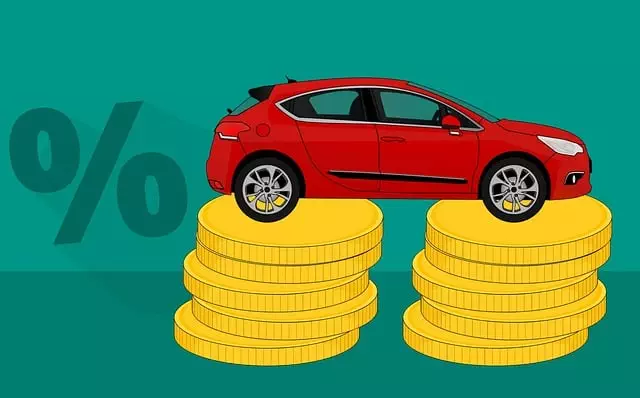Demystifying Full Coverage Auto Insurance: Protection, Types, and Cost
Full Coverage Auto Insurance Explained provides comprehensive protection for vehicle owners against…….

Full Coverage Auto Insurance Explained provides comprehensive protection for vehicle owners against diverse risks like accidents, theft, vandalism, and natural disasters. Unlike liability-only coverage, it includes collision, comprehensive, and additional benefits such as roadside assistance and rental car coverage. Understanding different components, exclusions, and factors influencing costs is crucial when choosing the right policy. By comparing quotes from multiple insurers, considering discounts, and tailoring coverage to personal needs, drivers can ensure adequate protection without exceeding their budget, offering peace of mind during unforeseen events.
Discover the ins and outs of Full Coverage Auto Insurance Explained. This comprehensive guide deciphers what full coverage actually means, why it’s crucial for protecting your vehicle, and how it stacks up against other insurance options. From understanding key coverages to navigating exclusions and saving on costs, this article is your go-to resource for making informed decisions about your auto protection. Learn how full coverage can make a tangible difference in real-world scenarios.
Understanding Full Coverage Auto Insurance: What It Covers

Full Coverage Auto Insurance Explained is a protective measure for vehicle owners, offering comprehensive protection against various risks associated with car usage. Unlike liability-only coverage that primarily protects against claims made by others in case of an accident, full coverage encompasses a broader spectrum of scenarios. This includes damages to your own vehicle resulting from accidents, theft, vandalism, and even natural disasters like floods or earthquakes.
In essence, when you have Full Coverage Auto Insurance, you’re safeguarding your investment – your car – against unexpected events that could leave significant financial burdens. It typically comprises collision coverage (for accidents), comprehensive coverage (for damages beyond collisions), and often includes additional perks like roadside assistance, rental car coverage during repairs, and medical payments for injuries sustained in an accident.
The Importance of Full Coverage in Protecting Your Asset

Having full coverage auto insurance is paramount for safeguarding your vehicle and financial well-being. In a world where unexpected events are inevitable, full coverage offers a comprehensive safety net. It not only protects against common risks like accidents and theft but also includes liability coverage, which can be a significant financial safeguard if you’re found at fault in an incident.
This type of insurance is especially crucial for asset protection. Should your vehicle sustain substantial damage or be completely written off, full coverage ensures you’re compensated fairly, allowing you to either repair or replace it without incurring excessive costs. By investing in full coverage auto insurance, you’re not just insuring a material possession; you’re securing peace of mind and financial stability in the face of unforeseen circumstances.
Uncovering the Different Types of Full Coverage Policies

When it comes to full coverage auto insurance explained, understanding the various types is key. Full coverage policies are designed to protect drivers from significant financial losses in the event of an accident or damage to their vehicles. These policies typically include liability coverage, which pays for damages caused to others, and comprehensive and collision coverage, which safeguard against other types of incidents.
Comprehensive insurance covers damage to your vehicle from non-collision events like theft, natural disasters, or vandalism. Collision coverage, on the other hand, kicks in when your car is damaged in a crash with another vehicle or object. Knowing the specifics of each type helps drivers make informed choices, aligning their policy with their individual needs and budget while ensuring adequate protection under their full coverage auto insurance explained.
How to Choose the Right Full Coverage Plan for Your Needs

When choosing a full coverage auto insurance plan, understanding your needs is crucial. Assess factors like your driving history, vehicle age and condition, and daily use. Younger drivers or those with multiple claims might require higher liability limits for protection against potential accidents. Older vehicles may not need comprehensive coverage if their replacement cost is lower than the policy deductible. Daily commuters may benefit from increased collision coverage to cover unpredictable incidents on the road.
Research different insurance providers and compare policies to find the best fit. Look at coverage options, deductibles, and exclusions. Online platforms allow for easy side-by-side comparisons of rates and features. Additionally, reading customer reviews can provide insights into claims processing and service quality. Remember, the right full coverage plan should offer adequate protection while aligning with your specific circumstances.
Common Exclusions in Full Coverage Auto Insurance

Full Coverage Auto Insurance, while offering comprehensive protection for vehicle owners, does come with certain exclusions that are important to be aware of. These exclusions vary slightly between insurance providers but generally include specific situations where your coverage may not apply. For instance, many policies exclude damage caused by natural disasters like floods or earthquakes, unless you’ve added specific riders for such events.
Additionally, full coverage typically does not cover certain types of incidents involving non-owned vehicles, such as damage to a rented car or a vehicle borrowed from a friend without the owner’s consent. It also usually excludes liability arising from activities like illegal transportation of goods or driving under the influence. Understanding these exclusions is key to ensuring you’re adequately protected by your Full Coverage Auto Insurance Explained policy and aware of any potential gaps in coverage.
Comparison with Other Auto Insurance Options

When considering different auto insurance options, understanding Full Coverage Auto Insurance Explained becomes crucial. Unlike basic liability coverage which typically includes minimum levels of protection for both your vehicle and others involved in an accident, full coverage offers a comprehensive suite of services. This includes collision and comprehensive coverage, safeguarding against damages from accidents or external factors like theft, vandalism, or natural disasters.
Comparatively, full coverage provides broader protection than separate collision and comprehensive policies. While other options may focus on specific aspects like liability for third-party damages or medical payments for injured parties, full coverage takes a holistic approach by protecting both your vehicle’s value and your financial well-being in various scenarios. This makes it a preferred choice for drivers who want peace of mind and thorough protection for their investment in a vehicle.
Factors Affecting the Cost of Full Coverage Insurance

Full coverage auto insurance, as the name suggests, provides comprehensive protection for vehicle owners. But did you know that several factors influence its cost? Understanding these variables can help drivers make informed decisions when shopping for policies. One key factor is your driving history and claims record. A clean driving record typically leads to lower premiums since insurers perceive you as a safer driver less likely to file claims. Conversely, accidents, moving violations, or previous claims can drive up costs significantly.
Another critical aspect is your vehicle’s make and model. Luxury cars or high-performance vehicles often carry higher insurance rates due to their higher replacement value and potential for more severe damage in accidents. Conversely, older or more basic models might be cheaper to insure. Additionally, location plays a role; premiums vary across regions based on local risk factors such as crime rates, weather patterns, and traffic density. Finally, your chosen coverage limits and deductibles directly impact costs—higher limits and lower deductibles mean higher premiums but potentially greater protection.
Tips for Getting the Best Deals on Full Coverage Policies

When shopping for full coverage auto insurance, understanding your needs and market trends is key. Start by comparing quotes from multiple insurers to get a sense of the range in prices. Remember that factors like your driving history, vehicle make and model, and location can significantly impact premiums.
Consider enhancing your policy with additional discounts, such as safe driver programs, bundling with home insurance, or paying annually instead of monthly, to secure even better deals on your full coverage auto insurance. Researching and shopping around will empower you to find the most suitable policy within your budget.
Real-World Scenarios: When Full Coverage Makes a Difference

In everyday life, unexpected events can occur at any moment, and having the right auto insurance coverage can make all the difference in such scenarios. Full Coverage Auto Insurance Explained is a comprehensive policy that provides protection against various risks on the road. It goes beyond the basic liability coverage by including damages to your vehicle caused by accidents, natural disasters, theft, or vandalism.
Consider a real-world scenario: imagine you’re driving home late at night when a reckless driver hits you head-on, causing significant damage to both vehicles. Without full coverage insurance, you might be left with substantial out-of-pocket expenses for repairs or even a new car. However, with this type of insurance, your policy would cover the cost of repairs or replacement, providing financial peace of mind and ensuring you can get back on the road safely and quickly.







